In many ways, the stories of Philadelphia and Chicago are very similar. Both are big urban centers made up of quirky neighborhoods, with great restaurants and mass transit systems. Both have longstanding traditions of being run by political machines.
And both face serious challenges in terms of race, crime and education. Yet the problems we have in Philadelphia seem much calmer than in Chicago. In terms of relations between police and the community, though we have challenges, we also haven’t had the steady stream of headlines chronicling systemic abuse as in so many other cities, including the Windy one. And Chicago’s schools debate has also been incendiary. On many critical urban issues, the temperature of the debate in Chicago seems to be significantly higher—which may help explain its higher voter turnout.
“Chicago is a much more divided city than Philadelphia,” says Professor Richardson Dilworth of Drexel’s Center for Public Policy. Dilworth cites a study by the New York Times and the Kaiser Family Foundation in the spring that found Chicago to be “deeply riven by race, class and neighborhood, distrustful of the police and fearful of the growing rate of crime.”
What explains the difference? According to Dilworth, it might have something to do with a particularly subtle distinction. “Chicago is more geographically segregated by race than is Philadelphia,” Dilworth says. “And, yet, it’s very diverse.”
In fact, Nate Silver has documented on fivethirtyeight.com that Chicago is the preeminent face of a trend that finds our most segregated cities to also be among our most diverse. (In our chart, we use the Herfindahl-Hirschman Index (HHI), a calculation typically used to measure business concentration but can also be applied to racial diversity; the closer a city’s score is to one, the more homogeneous and less diverse its population.) “Extreme geographic segregation in Chicago is an old story—it is part of why Chicago played a more prominent role in defining the ‘urban underclass’ than did New York City or Los Angeles through the work of William Julius Wilson and more recently by Robert Sampson,” says Dilworth. “It can also partly be explained by the political coalition of blacks and white working class ethnics legendary Mayor Richard Daley first put together and empowered. Unlike in Philadelphia, those politics resulted in massive housing projects like the Robert Taylor and Cabrini Green homes, which helped create a type of permanent underclass. There was nothing of that scale in Philadelphia.”
Chicago’s Idea We Should Steal: Planning Integration
One of the reasons I’m so passionate about cities is that, growing up, my dad was the city manager in Ferndale, Michigan, just outside Detroit. Today, Tom Barwin is the city manager in Sarasota, Florida. He’s a leading thinker on American cities; you can follow him on Twitter @tombarwin. While the Philadelphia neighborhood of Mt. Airy is known for making diversity a high community priority, Oak Park, Illinois—just outside Chicago—built a deliberately integrated community through a series of official initiatives that have maintained a mix of residents. I asked my Dad to walk us through how they did it:
“One of Chicagoland’s most unique and successful public policy initiatives was not in Chicago, but in the adjacent community of Oak Park on Chicago’s west border.
In the late 1960s, it was thought that Oak Park, served by the city’s transit system, would experience the same patterns of block busting, white flight, disinvestment, resegregation and school decline that Chicago’s south and west side neighborhoods experienced.
But in a series of stunning and bold public policy initiatives, Oak Park (home to Ernest Hemingway and Frank Lloyd Wright) successfully built an integrated community. First, the town passed one of the first fair housing ordinances in Illinois. Simultaneously, efforts to educate realtors on fair housing were undertaken and a housing center was opened to market the city nationally to those who desired to live in a racially diverse community. They purposefully marketed rentals in predominantly white areas to potential African American tenants, and areas vulnerable to resegregation to potential caucasian residents.
Oak Park passed one of the first fair housing ordinances in Illinois. Simultaneously, efforts to educate realtors were undertaken and a housing center was opened to market the city nationally to those who desired to live in a racially diverse community.
These policies were rooted in a home owners equity assurance program that guaranteed residents who stayed in Oak Park that the city would cover any equity lost due to the city’s planned integration. Diversity assurance programs encouraged landlords to maintain diverse multiple family rental buildings, so no single building became all white or all black. A 501c3 housing agency was created to acquire and repair blighted multifamily properties while reserving a considerable portion of the units for low and moderate income residents, assuring racial and economic diversity.
Block parties were encouraged, “For Sale” signs were banned, resident welcoming committees were formed to welcome new residents into town, and Oak Park was one of the early communities to begin practicing true community policing.
Today Oak Park remains one of America’s most successfully integrated and diverse communities, with low crime, very good schools and solid property values. While little known, most of Oak Park’s ground breaking integration programs remain in place today while significant areas of Chicago continue to struggle with crime, poverty and segregation.
Despite our country’s progress, perhaps the lessons learned in Oak Park should be revisited when considering urban America’s racially segregated pockets of poverty today.”
Next week we take on Pittsburgh.
Connor Barwin is the Eagles defensive end and runs the Make The World Better Foundation, which works to refurbish city parks.
Results

PhiladelphiaEagles |
|
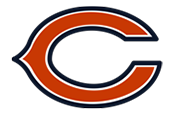
ChicagoBears |
|
# of B Corporations
27 |
7 POINTS
Eagles |
# of B Corporations
18 |
|
% Graduated high school in last school year
65 |
7 POINTS
Bears |
% Graduated high school in last school year
69.7 |
|
Diversity Index
0.34 |
7 POINTS
Bears |
Diversity Index
0.33 |
|
% Bike to work
1.9 |
7 POINTS
Eagles |
% Bike to work
1.7 |
|
% Acres of park space
13 |
7 POINTS
Eagles |
% Acres of park space
9.1 |
|
Violent crime per 1,000 residents
10.2 |
7 POINTS
Bears |
Violent crime per 1,000 residents
8.8 |
|
% Voted in last mayoral election
25.5 |
7 POINTS
Bears |
% Voted in last mayoral election
40 |
|
% Below poverty
26 |
7 POINTS
Bears |
% Below poverty
22 |
|
Public transportation score
67 |
7 POINTS
Eagles |
Public transportation score
65 |
|
Final Score
28 |
Chicago
Bears |
Final Score
35 |
Sep. 11 |
63-0
Eagles |
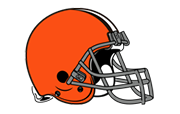
Browns |
Sep. 19 |
28-35
Bears |

Bears |
Sep. 25 |
35-28
Eagles |
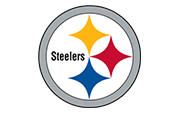
Steelers |
Oct. 09 |
63-0
Eagles |

Lions |
Oct. 16 |
28-35
Redskins |
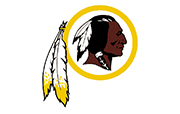
Redskins |
Oct. 23 |
28-35
Vikings |

Vikings |
Oct. 30 |
35-28
Eagles |

Cowboys |
Nov. 06 |
14-49
Giants |

Giants |
Nov. 13 |
56-7
Eagles |
Falcons |
Nov. 20 |
35-28
Eagles |

Seahawks |
Nov. 28 |
35-28
Eagles |
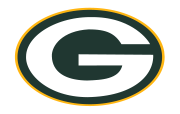
Packers |
Dec. 04 |
35-28
Eagles |
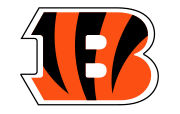
Bengals |
Dec. 11 |
28-35
Redskins |

Redskins |
Dec. 18 |
49-14
Eagles |

Ravens |
Dec. 22 |
14-49
Giants |

Giants |
Civic Record:
EAGLES |
Wins
9 |
Losses
4 |
Upcoming Games:
For more information on this data, see the Civic Season Explained page.
Note: The Eagles play Washington, D.C., New York and Dallas twice this season, but we only count each city once in the Civic Record.




